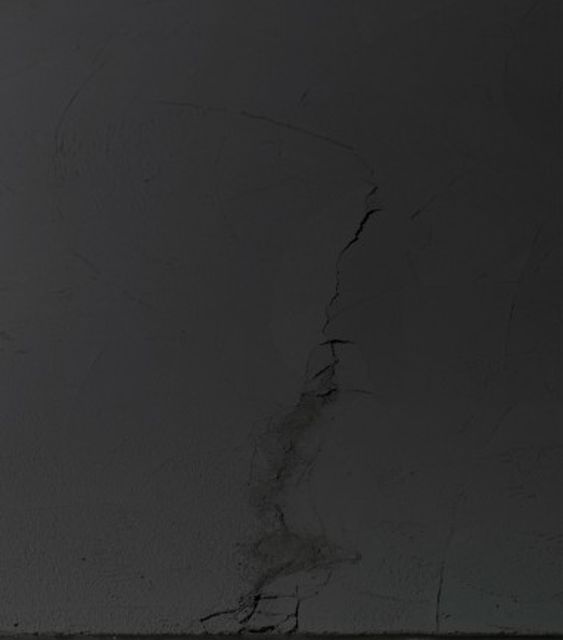
Diana Stigter is proud to announce the first solo exhibition of Yael Davids at the gallery. Her work focuses on the narrative character that is typical of documentation and repetition. With a strict economy of gesture and an ongoing interest in the notion of performance, her installations attempt at turning memories of ephemeral, fleeting presence into a definite shape. Born and raised in Israel, Davids work emphasizes to the conflicted political history of a nation-in-the-making, and her own individual biography that has been impacted by loss and the experience of mourning.
In the exhibition space, Davids leads us through a rigid ‘spatial choreography’ with breakability and fissure being central themes. A number of sheets of glass are hanging from the ceiling opposed to two monochrome boards of loam. They function as a quotation of Davids’ performance ‘Learning to Imitate in Absentia’. Glass is a material that only recently became part of Davids work. In the Kibbutz were she was born, a glass factory was founded in 1979.The factory started with the production of window glass but slowly, as the Palestine-Israeli conflict escalated in subsequent Intifadas, the demand appeared for thicker and stronger, bulletproof glass, resistant to machine gun fire and soon even to RPB rockets and bazooka grenades. While very breakable in itself, the glass shown at the exhibition space is the only material that is not broken or cracked, but at the same time they exude a constant suggestion of danger.
Next to the glass, some objects from an entirely different cultural context are exposed: Japanese tea bowls made between the 16th and 18th century, so-called “mended ceramics” – a technique describing the art of repairing broken ceramics by further articulating their fissures with gold fillings, thus making the repaired object more precious than the new one. By tradition these objects became a signifier for the appreciation of imperfection through carefully commissioned skilled labor. Placed within the friction of the bullet proof and the breakable glass, they gain another layer of meaning: While exposing a great sensibility, Davids’ installation proposes a lyrical statement that vacillates between accepting transience of life and holding against it. Above all, it’s about accepting and integrating the ‘break’. Time and event become part of the object, and it is this act of tracing and documenting that resonates in Davids’ work.
The act of tracing and documentation is also evident in the two photographs, which at first sight show two deserted landscapes: They are images of Bayt Thul, Jerusalem District, and of Suba, a Palestinian Arab village west of Jerusalem that was depopulated and destroyed in 1948. The site of the village lies on the summit of a conical hill called Tel Tzova, and it was exactly there that David’s played when she was a child without knowing the history of the village itself.
It is a subtle yet forceful language that Davids’ minimal but highly personal installations convey. Resonating long after, they unfold the potency of proposing a voice in public discussion.